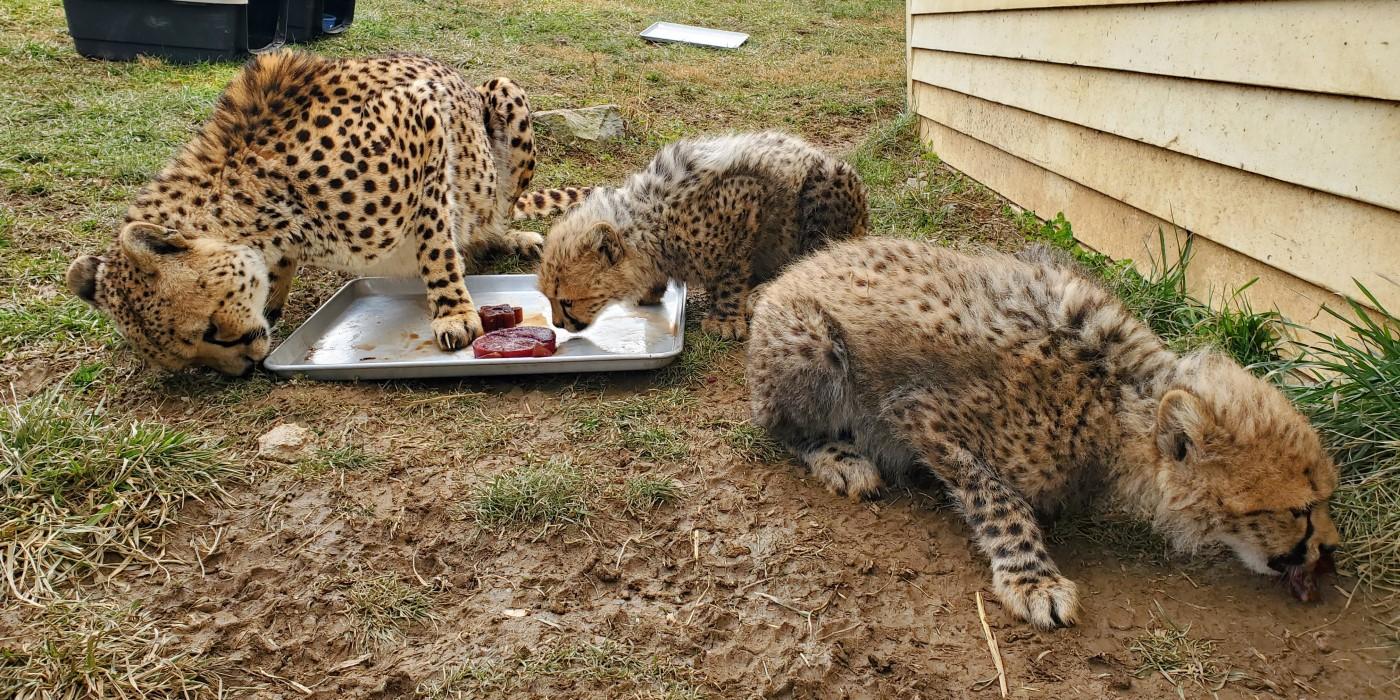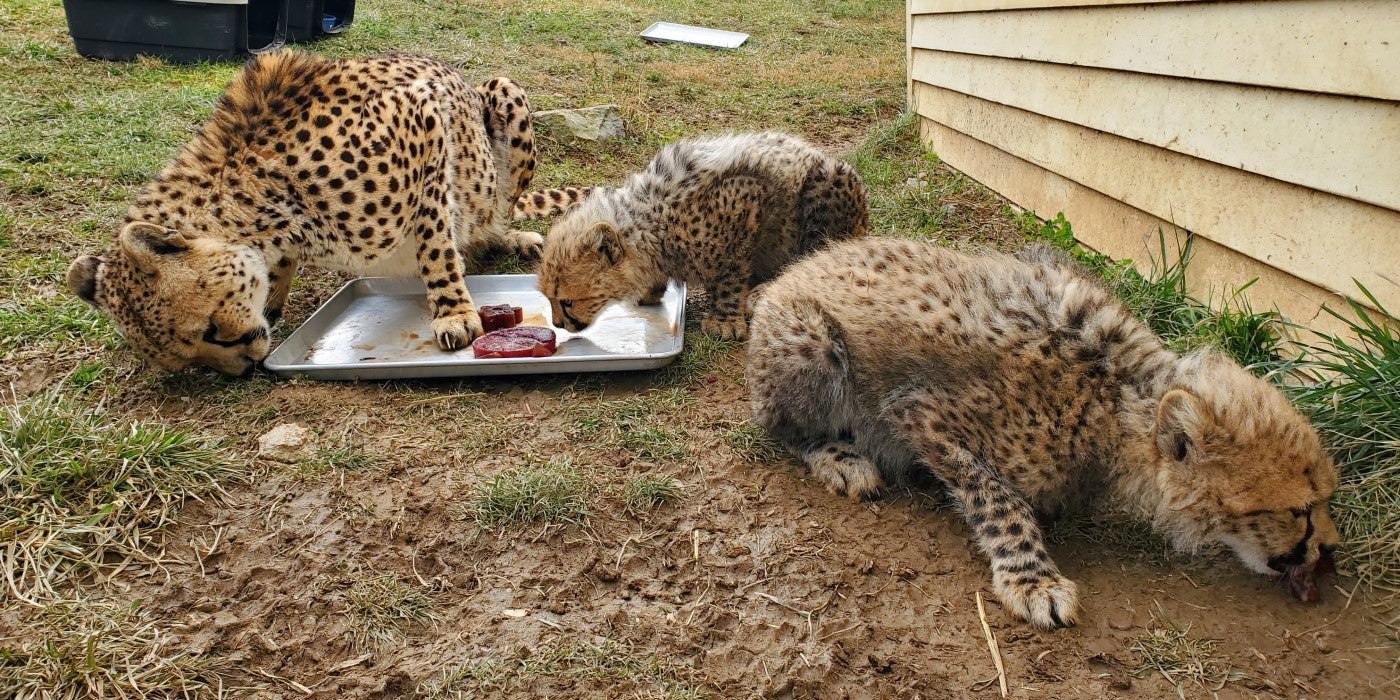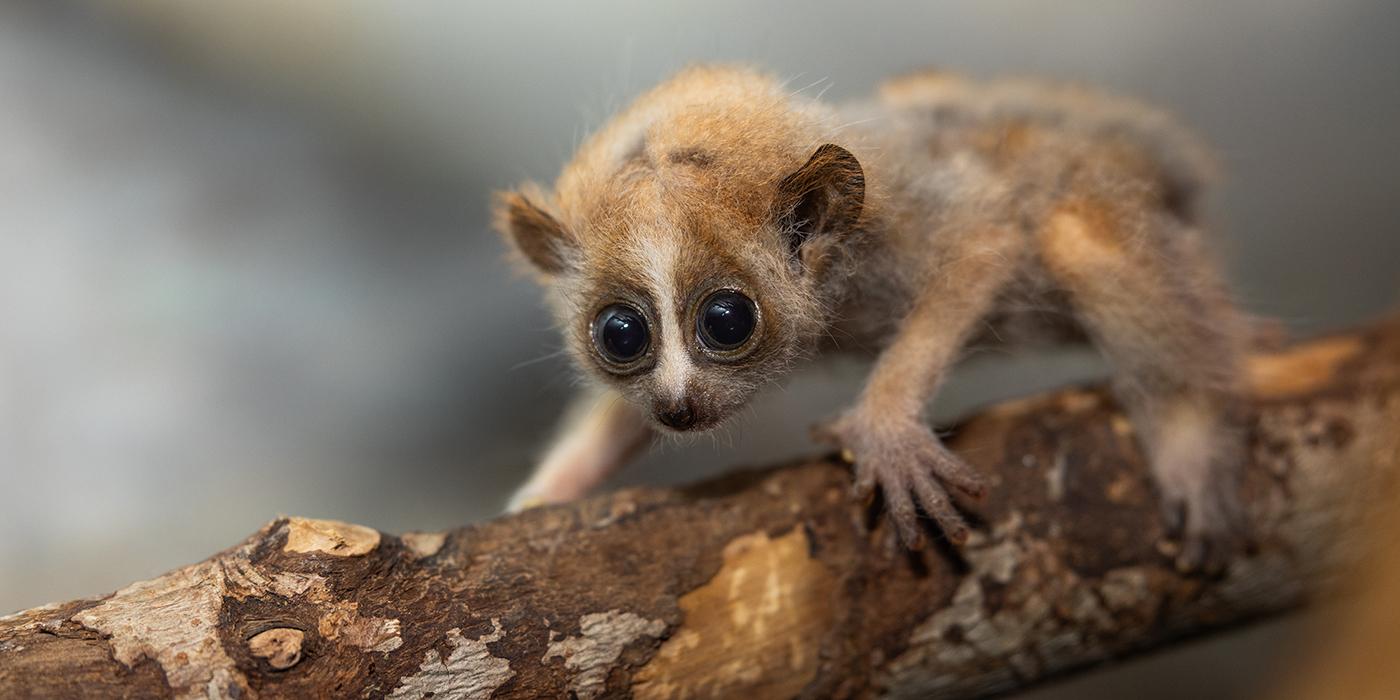#CheetahCubdate 7: How to Enrich and Train Cheetahs

Our 4-month-old cheetah cubs have had a busy couple of weeks! They played on new furniture in their yard, got a taste of a new treat, and had their last cub veterinary exam. It’s always a joy to watch these healthy cubs grow and experience new things!
At the end of January, we placed a platform “bed” made from upcycled fire hose in Amani’s yard for her and the cubs. We also set the upside-down plastic tub and large wooden spool on either side of the bed to help the cubs climb up. The cubs were quick to explore this new set up. They seemed to most enjoy batting jolly balls off and around the furniture. We often see them taking turns hopping onto the bed. One will watch for an opening from one of the other pieces of furniture while his brother pounces around.
Furniture provides the cats with different perspectives and heights to survey their habitat. The fire hose beds are popular for our cheetahs since they are a comfortable place for them to lay on top of in the sun or under for some shade.
In addition to the new furniture, the cubs also tried a new treat: bloodsicles! This food item is exactly what it sounds like. We freeze a tray of beef blood, and then break it into large “popsicles” for the cats to lick and gnaw on. The cubs seemed to really enjoy these treats. One of them even knocked a smaller piece off and was licking it across the yard!

In our last update, we talked about training the cubs to voluntarily participate in their healthcare using positive reinforcement. As part of this, we spend intentional time with our cheetah cubs, so they become familiar and comfortable with us.
Most training takes place in the stalls, where a mesh barrier separates us from the cats. However, the cubs are now too big to be picked up for exams, so our goal was to have the cubs walk into a carrier for their 16-week-old veterinary exam. This required us to share space with them in a small yard. We offered the cubs a tray of food and some treats on a spoon. It took a while for them to become comfortable with this, but once they realized they got food and treats they were on board. While we were in the small yard with the cubs, Amani was eating or gnawing on a bone in one of the adjacent stalls.
After seeing that the cubs were comfortable sharing a space with us in the yard, we brought two carriers into the yard and placed a small bowl of meat inside each as a reward for when the cubs entered. Before the exam, both cubs got to a point where they would enter the carriers voluntarily with us there!
Exam days can always go a bit differently than training. There are new people, and we wear scrubs instead of our usual clothes, so it is understandable that the darker cub chose to not enter the carrier. The lighter cub went in just like he was trained to!
During the 16-week-old veterinary exam, both cubs were checked over and received the last of their cub vaccines. They will receive their next set of vaccines when they turn 1 year old in October 2023. Between now and then, the cubs come up to the fence for food and treats, which allows us to get a good look at them every day. We will also continue to monitor their weights as often as we can but at least every 2 weeks. These cubs have already mastered getting onto the scale.
Currently, there is about a 10% size difference between the cubs. This is completely normal and in larger litters there’s usually an even larger gap. The most important thing we look for with cubs’ weights is that they are gaining weight at every weighing – which these two are! At their last weigh-in, the lighter cub weighed 20 pounds (9.1 kilograms) and his brother weighed just shy of 18 pounds (8.1 kilograms). While these weights are a little above average for 4-month-old cubs, they are normal weights for cubs in a smaller litter.
We will continue training the cubs in the coming months. Next, we will work toward training for blood draws through tail touching and administering vaccines while sitting and eating alongside a board in the stall. You can look forward to more updates as the cubs master new skills and experience new food and enrichment items!
Can’t wait for the next #Cheetahcubdate? Try to catch a glimpse of this cheetah family any time on the Cheetah Cub Cam. Catch up on previous #CheetahCubdates here.
Related Species:


